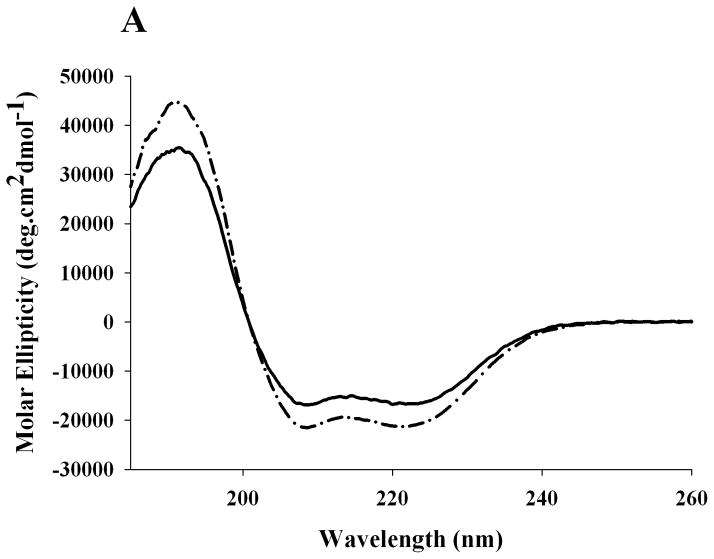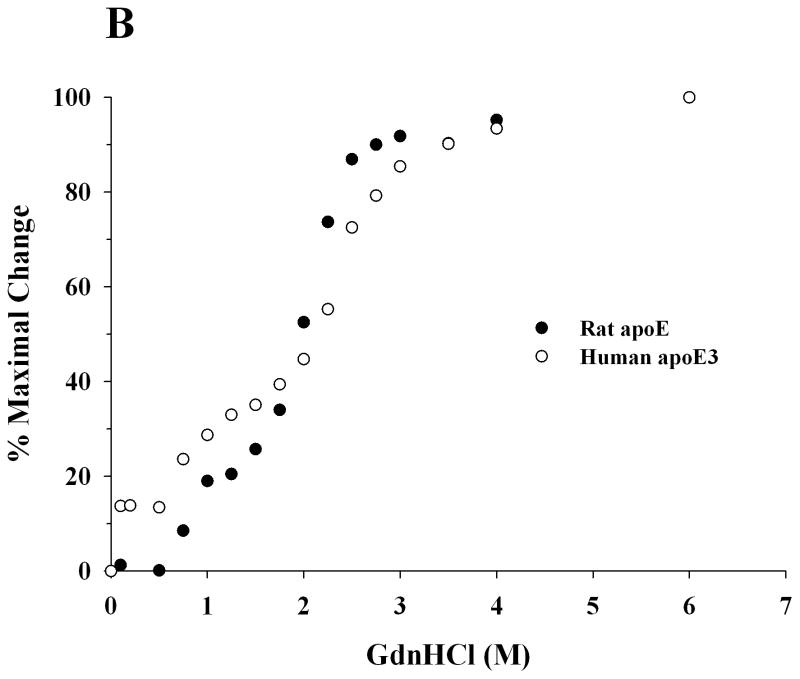Figure 4. Secondary structure and GdnHCl-induced unfolding of rat apoE.
A. Far-UV CD spectra of apoE. The spectra of rat (solid line) and human apoE3 (dashed line) (0.2 mg/ml) were recorded in 20 mM sodium phosphate buffer, pH 7.4. The spectra were recorded from 185 to 260 nm using a 0.1 cm path length cell, scan speed of 20 nm per minute, and response time of 1 second (average of 3 scans shown). B. GdnHCl-induced unfolding of apoE. The % maximal change in ellipticity of 0.2 mg/ml rat apoE (closed circles) and human apoE3 (open circles) at 222 nm was plotted as a function of increasing GdnHCl concentration. ApoE3 was pre-incubated with 5-fold molar excess of reducing agent, dithiothreitol, to reduce existing disulfide bonds.


